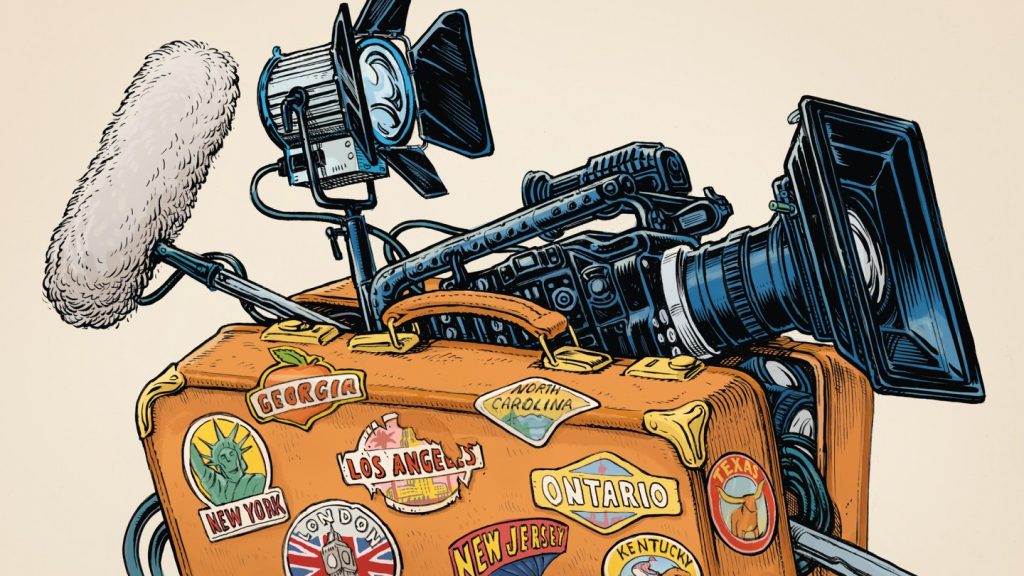California Governor Gavin Newsom is trying to prevent studios from leaving Los Angeles by proposing to increase the film and TV tax incentive from $330 million to $750 million annually. Despite this, producers are discovering numerous new and cost-effective soundstage options in more distant locations. Many film studios and facilities are currently under construction across North America and Europe, aiming to attract Hollywood projects relocating elsewhere. Besides well-known competitors like Georgia, New Jersey, and New York, California faces emerging threats from other areas.
For instance, Louisville, Kentucky, which is not typically viewed as a production center, is gaining traction. Films such as Gus Van Sant’s Dead Man’s Wire and Dustin Hoffman’s The Revisionist have received incentives to film there. Additionally, plans for a $75 million redevelopment of the historic Louisville Gardens arena into a film studio complex are set to commence, bolstered by a refundable Kentucky film tax credit of 30 to 35 percent, with a maximum limit of $10 million per project. “Interest in production has surged in our area due to this generous incentive,” says Louisville film commissioner Soozie Eastman.
Similarly, in North Carolina, veteran director Robert Rippberger has renamed his Ascent Studios to White Lightning Studios. He aims to attract filmmakers with the state’s 25 percent tax rebate. “We’re prepared for the major streamers to film at our studio once our stages are complete. If challenges arise, like COVID-19 or a significant strike, we can also host concerts and weddings. We’re ready to diversify,” he states.
Learning from previous challenges, many studios are now hosting streaming projects cautiously. Following the Hollywood strikes in 2023, major studios decreased their content spending, causing a decline in the attractiveness of film and TV studios for investors. This scenario has led productions to explore off-shore options for tax incentives and lower labor costs, as the economic conditions for producing entertainment content continue to be delicate.
Kirk Englebright, CEO of Dark Horse Stages, recently launched two new soundstages in Wilmington, North Carolina. YouTube star Jimmy Donaldson (MrBeast) filmed a video on the premises. Englebright sees Donaldson as a model for the future of production, emphasizing streamlined shifts between global projects. “They are adept at staying engaged with their audience and constantly moving on to new ventures,” he added.
In Texas, South Side Studios in Dallas reopened with three new soundstages between 10,000 and 20,000 square feet. Tony Armer, of Talon Entertainment, noted significant interest in filming in Texas, particularly in Dallas, as everyone anticipates the approval of proposed increases to the state’s incentive program. “If we see those changes, demand for filming in Texas will skyrocket,” he forecasts.
Meanwhile, in the United Kingdom, recent tax incentives are enhancing its appeal as a production location. In February, Eastbrook Studios, London’s largest film and TV studio campus, officially opened, coinciding with new government tax relief for studio facilities until 2034. Similarly, Toronto is progressing with Hackman Capital’s Basin Media Hub, a $250 million film studio development, while locations like Oakville are repurposing facilities like the Centennial Pool into dedicated filming sites. This ongoing trend highlights a potentially pivotal moment for production as Hollywood grapples with the challenges of recovery and adaptation in a changing landscape.



